Starting a wildflower garden using micro clover instead of grass?
I have my dirt bare and ready for planting my seeds this winter for two different wild flower areas. I am not new to gardening, but I am totally ignorant of wildflower gardening. Years ago I tried it and ended up with a hideous weed patch. My goal is to minimize lawn and maximize bee/butterfly habitat.
I have been a "lurker" on this forum and this is my first post...so I'm new to this too. ( :
I am wondering if I can start a wildflower garden using the micro clover ("Trifolium repens Pirouette" ) or even the Bronze Dutch Cover (Trifolium repens atropurpureum) instead of mixing in grass to decrease the weeds. That way I could use Grass Getter to get rid of the crabgrass that will be right next to this bed.
I have two mixes of wildflowers (the lists will be at the end, so you do not have to read them unless you want to do so). One mix is "Low Profile Wildflower Mix" where the tallest is about 2 feet and the other mix is a "Deer Resistant" Mix.
By reading this site, I see the recommendation of the little bluestem (Schizachyrium scoparium) Blaze and would have no problem adding this to my taller area, but am concerned about it hiding the shorter mix.
I am open to any and all suggestions and look forward to reading your posts.
Low Profile Mix
*Dwarf Bachelor Button
*Alyssum
*Candytuft
*Dwarf Lance-Leaf Coreopsis
*Siberian Wildflower
*Chinese Houses
*African Daisy
*Blue Flax
*California Poppy
*Baby�s Breath
*Spurred Snapdragon
*Catchfly
*Baby Blue Eyes
*Godetia
*California Bluebells
*Sweet William
*Dwarf Plains Coreopsis
*Chinese Forget-Me-Not
Deer Resistan Mix:
White Yarrow, Columbine, Bachelor Button, Godetia, Lance Leaf Coreopsis, Larkspur, Foxglove, Purple Coneflower, California Poppy, Blanketflower, Candytuft, Alyssum, Perennial Lupine, Forget-Me-Not, Black Eyed Susan, Marigold Crackerjack
Comments (52)
dbarron
10 years agolast modified: 9 years agoWell your heart is in the right place :) You may not know it or not, but most insect species (and thus everything higher in the food chain->birds/reptiles/amphibians) basically feed on one or two species of plants, and if those aren't present, neither is the insect. It's really important to plant milkweeds if you want to see Monarchs (for instance), but they're not the only insect with specific host requirements. Most non-native plants (not all), have no value to the insects (or at best, only a nectar source for butterflies), but nothing for the larval stages that have to come first.
Your creek area would be a good area to plant a moist meadow (esp the grasses) to anchor it down.
Unfortunately, due to your area (SC), you're going to find that the natural enemy of meadow plantings are trees and vines. I did this in Oklahoma too (which is on the cusp of prairie and woodland), and found only fire (burning) at end of season could keep things prairie and not woodland successional. If you intend to keep it more cultivated, then you can weed eat and try to rogue out the tree seedlings that will come.I found it astonishing what grew when I just stopped mowing (however, my property had only been mowed for about 10 yrs), and had quite a diversity of prairie plants. I took the long term approach of buying a small number of small plants and seeing what throve (and reseeded). I had a good underpinning of grasses already/still, though I also put about 40 lbs of a grass seed mix from nearby Kansas in the first year.
For low cost small plants ($2 or so), this is great: http://www.mowildflowers.net/
I don't know SC that well, I would strongly suggest you seek a naturalist in your area and get their advise. A native plants nursery can probably advise or point you at someone that can. It's also possible that your state government (in Arkansas we have the Natural Heritage Commission) has a group that may be able to suggest and possibly even offer plants and seed mixes for free for that purpose.
I know it sounds like I'm pooh poohing on everything...but the more you know the more likely you are to have some success. And I DEFINITELY know that the more preparation you do...by far the better in the long run.
In a prairie, the grasses and flowers evolved side by side. In general, the grasses prevent erosion, shade, and protect small wildflowers, and prevent emergence of cool season weeds/grasses, which are quite detrimental to reseeding of prairie plants, and may even shadow out older plants. You have a flower bed if you don't plant grasses:)
In my property (though perhaps you don't care for some of them), I had toads, frogs, snakes, lizards (including glass lizards (legless)), deer, all sorts of birds (including painted buntings), all sorts of insect life, parasitic plants (on grass roots), native orchids, all manner of prairie plants. But that requires enough space and time....it took 5-8 years to get a real prairie look going.
Bear in mind that if you're planting for birds, birds have to have insects to feed their young, they require a winter food source (like berries or seeds), nesting sites. All of which can be addressed somewhat by your plantings, just that a real bio site needs meadows, trees, shrubs, vines, etc.Ok, you're now totally overwhelmed....I hope I said something that helps though.
waterstar
Original Author10 years agolast modified: 9 years agoYour post is VERY helpful. Great idea about me seeking a naturalist here. I will call the extension office today. Especially since I don't know much about SC either. I moved here from Oregon last year. DUH
Sounds like you did a great job on your praire. I doubt I'll get that far. I do let my back acre grow during the summer and then a neighbor farmer mows it a couple of times for the hay. No flowers at all...only hay. The main problem for me is that it creates habitat for copperheads and I have two small dogs I'd rather not have killed by the baby copperheads. I have the word out that I will take any and all King snakes others do not want.
Yes, I thought I'd plant some milkweed so the monarchs will have breeding ground. I posted on the milweed forum for advise on which one to choose as a beginner. I am not really focused on wanting to see any particular bird or butterfly, just on having an environment that will do them more good than harm.
The area I dug up for flower bed turned out to be the place the builders dumped all the foundation digging dirt, cans, bottles, construction materials etc. and also hard packed it down with their equipment and it has not be bothered since. Sigh. Happily, my farmer neighbor came to ask for the sod. I was going to keep it for compost but traded it for him using his scarifier on the soil. No way would a rototiller even touch it. Anyway, I think all weed seeds will come from what I added.All the houses next to me are tree filled, so there is some mixed habitat nearby.
Thanks very much for the lead on mow wild flowers and very helpful information. I very much appreciate it.
Related Professionals
Tempe Landscape Architects & Landscape Designers · Surprise Landscape Contractors · East Patchogue Landscape Contractors · Miller Place Landscape Contractors · Newberg Landscape Contractors · Olympia Landscape Contractors · Plantation Landscape Contractors · Royal Oak Landscape Contractors · San Rafael Landscape Contractors · Wailuku Landscape Contractors · Crowley Landscape Contractors · Camp Springs Landscape Contractors · Austin Decks, Patios & Outdoor Enclosures · Fort Worth Decks, Patios & Outdoor Enclosures · Reading Decks, Patios & Outdoor Enclosureswisconsitom
10 years agolast modified: 9 years agoWaterstar, in addition to the sound advice from Dbarron, I have a few thoughts: One, while it is true that native insects and all critters that are above them in the food chain depend on native plant species, it is not, in my opinion, necessary to adopt a harsh purist attitude about having a smattering of non-native species in the mix. Just be aware, as dbarron is trying to get you to be, of those which have the potential to create headaches later. An example of what I mean, pertaining to my region, would be something like Leucanthemum-Shasta daisy. Non-native, it still shows up in most of our prairie plantings and again in my opinion, does nothing but add a beauttiful white daisy to the main plant matrix we're creating. But to take this in the other direction, allowing say, a truely thuggish species like Phragmites into the mix would yield very poor results over time. That's kind of an obvious case, but I'm sure you get my point.
Another tidbit is, while you may not have the option or ability to do burns, some timely mowings can help to A) Knock down weed species flowers before they develop into seeds, and B) Tend to hold back on the natural succession towards woody species that would inevitably happen in both your state and mine. In fact, because I operate in N.E. Wisconsin, all of the "prairies" we've created actually represent a plant community that was absent, or veryr nearly so, at the time of European settlement here. Still, we like to produce these things for a variety of reasons, in our case, around stormwater detention basins, etc. But I digress
The mowing I speak of would be timed so that, as I said, troublesome weed species' flowers would be cut down before they've gone far enough to turn into viable seed. In the process, you will be also removing flowers from species you want in the mix-a necessary evil-but those species which are perennial will still remain, and those which are annuals, provided the mowing is done early enough in the growing season, oftern will still have time to re-flower/seed. This type of mowing is different than that used for a lawn, simply because it's doen at 6 to 8 inches, not the more usally 3-4 inches of your lawn.
I think you can achieve your goals. Just continue to update us as to where things are at, and by all means, make use of the suggestion to solicit the advice of local experts. They'll know far more about what works in that area.
+oM
waterstar
Original Author10 years agolast modified: 9 years agoHi wisconsitom,
Well, as I said, I am new to posting here. I thought I posted a reply to your comments, but apparently I did something wrong. OOOPs....
I really thank you for you very useful info. Yes, I am a more "casual" gardener who will welcome the daises. But, I am very thankful to both you and dbarron for helping to steer me away from a weed patch. In fact, I am not going to plant the mixes I purchased because I don't want to hand weed out the bachelor buttons.
The reason I thought I did not have to plant grass with the wildflower seeds was because I had read an article saying as much. So much for that plan.
I am considering sideoats grama (Bouteloua curtipendula) or prairie dropseed (Sporobolus heterolepis) as the grass because they are shorter. I especially like the idea of the sideoats because they are endangered in some states are are good forage so it should not hurt the cows in the area if some escape. Do you have any opinions on these grasses?
I have also decided to not put the wildflower meadow where I had planned. It gets a lot of runoff during storms and now I know that will bring in weed seeds. I will just use a good ground cover there.
Anyway, I did find local source for informaiton and have learned a lot more about my new area. I know I could be more brave and make my own mix, but I think it would be too expensive. I think I have found a good flower mix that is made from South East Native Mix. It includes: Includes: Annual Phlox, Black-Eyed Susan, Butterfly Milkweed, Clasping Coneflower, Gaura, Gayfeather, Gilia, Indian Blanket, Lanceleaf Coreopsis, Leavenworth's Tickseed, Lemon Mint, New England Aster, Partridge Pea, Perennial Lupine, Plains Coreopsis, Purple Coneflower, Rattlesnake Master and Scarlet Sage.
Thank you again for your encouragement and help.
jcalhoun
10 years agolast modified: 9 years agoI have several of those in your SE mix. I also added California poppies because I like them and they are native to some parts of the SE.
Marigolds are native to Mexico and the Southwestern USA.
dbarron
10 years agolast modified: 9 years agoOh wow...prairie dropseed is my favorite native grass in the world I think...I just love it.
If you can get a good stand of it, it's an ideal prairie babysitter and lovely in its swishy little clumps on it's own (at least my mind). I do know people that use it as edging in their beds because it is so (hate to use that word), formal looking.
I much like your new seed list! And so glad you got some coreopsis tinctoria in there...it's a great annual! I can also tell you that I believe the wildlife potential (butterflies, some larva, and birds eating seeds (esp finches)) is much higher than on your earlier plans too.
I've grown them all, but I had (doesn't mean you will) had problems with annual phlox, lemon mint, (lupine wouldn't grow), and scarlet sage persisting for me. The perennials have done well and most have done their best to propagate (though butterfly milkweed tends to fly away and plant someone else's yard). The asters and gaura will give you some very late color which is always welcome.
Hope you made a new friend looking for local resources too!This post was edited by dbarron on Sun, Nov 3, 13 at 18:12
waterstar
Original Author10 years agolast modified: 9 years agoCool. Thanks. I also like California poppies....a lot!....so will add some of those too. Also, marigolds I have always used because of the bugs.
My thoughts....even tho I am a newbie....about no fertilizer in the wildflowers.... I am going to use composted manure...also to help the first few inches of my red clay soil...because I know the buffalo pooped a lot. I call that fertilizer. ( :
waterstar
Original Author10 years agolast modified: 9 years agoHi dbarron,
So glad to hear you like this mix better. It is thanks to you and your warning!
I have never grown the butterfly milkweed. Is it naive to think I could remove most of the seeds to control where they go?
Also, I have to remove bermuda grass before I do the bed. Yikes. I have just learned the roots go down 2 ft! I only dug out 6 inches in my flower bed. Guess I'll be pulling until my head spins off or weakening to roundup.
I will dig DEEP in the area I will convert next. Oh my, I will be in shape! Anyway, does anyone have hints on a good barrier to the bermuda grass? I can't dig out the entire acre and cannot afford to hire it done. Sigh.
dbarron
10 years agolast modified: 9 years agoErr bermuda is best controlled by herbicide during active growth or spending a season with the whole area covered with a thick opaque layer (like wet newspapers and leaf mulch). There's just not any way to stop it (it's a monster).
I have killed it with Roundup in the past, but I suspect (and I can't remember a name now), grass specific herbicides may do a better job.
From reading, eliminating spreading grasses is the thing that can save you the most effort later. Fescue (clump grasses) are much easier to get rid of..you CAN actually dig them out.
If you're on top of it, you can collect most of the seeds before they go flying away like dandelions :)waterstar
Original Author10 years agolast modified: 9 years agoHi dbarron,
Yes, I figured active growing season will be when it hit bermuda the most. That is why I thought maybe a small part of my "mound" could be the "wild" area. There I have removed all of the sod and dumped a good 2-4 ft. of soil on top and mixed in organic matter. But, now I am not sure what I am going to do. So, I will wait and plan. At this age I've learned not to hurry and make things worse. ( :
By the way, I meant to mention that I am excited to hear you love prairie dropseed so much. I too love the look of grass blowing in the wind. And I have wind here! Anyway, I might just try and start a bunch from seed, get it established in the mound area along with the wildflowers. The thought of trying to remove and defend an acre of bermuda is a bit overwhelming and discouraging. I am perhaps best to put in a good solid "edger" that is buried in the ground to keep the bermuda out and then use something horrid like grass getter when necessary.
Thanks again for your persistence and wisdom.
waterstar
Original Author10 years agolast modified: 9 years agoHi dbarron,
Yes, I figured active growing season will be when it hit bermuda the most. That is why I thought maybe a small part of my "mound" could be the "wild" area. There I have removed all of the sod and dumped a good 2-4 ft. of soil on top and mixed in organic matter. But, now I am not sure what I am going to do. So, I will wait and plan. At this age I've learned not to hurry and make things worse. ( :
By the way, I meant to mention that I am excited to hear you love prairie dropseed so much. I too love the look of grass blowing in the wind. And I have wind here! Anyway, I might just try and start a bunch from seed, get it established in the mound area along with the wildflowers. The thought of trying to remove and defend an acre of bermuda is a bit overwhelming and discouraging. I am perhaps best to put in a good solid "edger" that is buried in the ground to keep the bermuda out and then use something horrid like grass getter when necessary.
Thanks again for your persistence and wisdom.
wisconsitom
10 years agolast modified: 9 years agoStar, it sounds like things are shaping up for this plan. Getting rid of a heavy turf cover can indeed be a challenge. I'd personally not be at all afraid to use glyphosate (Roundup and its many generic equivalents) but to each their own. The heavy covering of cardboard, leaves, etc. can certainly work as well.
I don't know if little bluestem-Schizachyrium scoparium-is native where you are, but it's another nice shorter-growing grass species. Often, it exhibits rather impressive fall color, at least in the part of the world where I live.
Good luck with your project!
+oM
waterstar
Original Author10 years agolast modified: 9 years agoHi wisconsitom,
Yes, it is another on my list! First I am going to cardboard the yucky bermuda all winter/summer and also use the grass getter type control on it. I want to get it under control as much as I can before I start the grasses.
But, while I am doing that, I am a little stumped as to what to put on the ground to prevent erosion. The only thing I can think of is micro clover. Any suggestions are welcome!
waterstar
Original Author10 years agolast modified: 9 years agoP.S. Everyone,
I will be a little slow to respond because my computer went to the hospital and it is slow to type on my iPad. But, I am reading each post promptly and with glee. ( :
wisconsitom
10 years agolast modified: 9 years agoIf you A) Smother with cardboard, followed by B) Use glyphosate-type herbicide to get whatever remains or re-seeds into the area, the whole thing should wrap up quickly, as in a couple or three weeks. You shouldn't have to have long stretches of time where there's no cover in place. I forget now-is there a slope to this site? You can use crimped straw when you plant your "permanent cover" seed, erosion mats, and the like, to prevent erosion during the grow-in process. But if the site is basically level, you may not even need to do this. Keep in mind, many seeds get their start most readily when not shaded by anything. So while the e-mat does serve a purpose, it also retards some things you want to happen.
I've used grass-only herbicides in the past. They have their place but it is mostly in cases where unwanted grasses have invaded a herbaceous groundcover, etc. If you want everything gone-and I think you do-I think it better to simply use the glyphosate-style herbicide. It's less toxic, virtually no carryover, and once it's done its job, you can immediately plant seeds. We sometimes overseed over just-sprayed undesirable vegetation, knowing the herbicide will not impede the seed and that the soon-to-be-dead vegetation to come will serve as a sort of "cover crop" for the new seeding.
I forget now, are you planning a dormant seeding? That's usually the most effective, at least up here.
+oM
waterstar
Original Author10 years agolast modified: 9 years agoWow, I had no idea I could kill the grass in a few weeks. Now I can go for it! I thought it took several months, duh.
Can I seed the grasses or is it best to buy plants? I have a hunch it is best to try and find the plants
wisconsitom
10 years agolast modified: 9 years agoSeed is "best" in that it is far less expensive, gives great results, seeded plants seem to really take hold of their site, and seed is easy to buy and handle. Plants in plugs are great because they take hold quickly, are bigger sooner, give a more immediate effect, and so on. If I was doing a large area-and I frequently am-I'd def. do all seed. If I was creating a small patch, I might elect to go with all plugs. There is no right answer, just which method meets your needs.
+oM
AJD1221
10 years agolast modified: 9 years agoI responded to your post regarding the milkweeds with a number of native Carolina types. Another thing to keep in mind along with the hundreds previously listed, is that it is your yard and you can do whatever you want with it for the most part. Just remember that nature takes what you've done and rearranges it how she wants it! :)
I'm planting a small area (about 225 sq ft) with native forbs such as milkweeds, ironweed, aster, coneflowers and so on. But I also have some non-natives in there like lavender and butterfly bush, just for added interest and smells. However, pre-European settlement, there was nothing but giant beech trees covering my immediate area so really, nothing I am planting has been native to this location since just after the last ice age.
GreatPlains1
10 years agolast modified: 9 years agoI shot this photo last summer of a demonstration native grass garden here at Will Rogers Park. The grasses close to the viewer are mature specimens of Sideoats grama. The smaller lanky grasses to the left of these are Little Bluestem (ouch). See what I mean by the Sideoats being larger, tussock-like, more dramatic and well behaved? Behind these grasses is hardy Lantana (yellow) and behind that is a very cloud-like mass of gorgeous Love grass. I don't know what kind but be aware that Love Grass is a very aggressive seeder. Little Bluestem does a lot better in dry cruddy conditions around here.
dbarron
10 years agolast modified: 9 years agoGreat Plains, I like your plantings! Very desertlike, while still colorful and interesting.
GreatPlains1
10 years agolast modified: 9 years agodbarron, it looks that way in the picture because that was taken in August after a very hot dry summer. You are from Oklahoma so you know we can be either very wet or in a drought under the heat dome. The cactus do surprisingly well because the yard is on a slope. I don't have any luck with some xeric plants but then others do OK. The plants I mentioned will bloom reliably in a scorching drought year and do well in a milder wetter year too.
One thing about adding grasses is it really helps to add winter interest.
waterstar
Original Author10 years agolast modified: 9 years agoHi Great Plains,
THANK YOU so very much for the detailed information. I have not put any grasses in yet, and love your suggestions. Also, got GREAT news, my grass is NOT the dreaded bermuda, but is the much more manageable Saint Augustine.
I just got back from vacation and also need to get a greenhouse up (Great Christmas present from hubby...harbor freight had an excellent sale). But, I will research and add many of your suggestions to my area.
Your photos look LOVELY. A great inspiration. THANKS AGAIN! More photos as the seasons change would be welcomed.
WaterstarGreatPlains1
10 years agolast modified: 9 years agoGreatPlains1
10 years agolast modified: 9 years agoGreatPlains1
10 years agolast modified: 9 years agoGreatPlains1
10 years agolast modified: 9 years agoGreatPlains1
10 years agolast modified: 9 years agoThe back coming in from the other side. We live next door to a guy with overgrown trees shading from the west, it makes it a bit more difficult to plant. The low yellow flowers are dogweed and the shrub is Apache Plume from New Mexico. The Grass just to the right is is Pine Muhly. Back here is where I have the Switch grasses but you cannot see them in the photos well. I'm planting lots of hardy lantana and Texas native perennials and shrubs. I'm about 97% native prairie grasses & forbs, perennials and native shrubs. Very low water and maintenance.
GreatPlains1
10 years agolast modified: 9 years agoSorry for so many posts. I was too lazy to download pictures in photo bucket so I could only post one photo per post but you can see what I have done here in Oklahoma (with an added SW flavor for sculptural interest). Here is a link for an inspiring prairie yard in case you haven't run across it. He has documented his entire makeover over a period of time, it's Texas Style but it may help give you some inspiration and other ideas. South Carolina must be a bit different? I am not familiar with the plants or what people do out there or if they are into getting rid of the typical lawns, its gained a bit of popularity around here where we have drought issues.
Here is a link that might be useful: http://planobluestem.blogspot.com/
waterstar
Original Author10 years agolast modified: 9 years agoWhat a pretty job you have done. Is that rock I see as the mulch? How do you keep the weeds down?
I think almost everything grows in SC. Water is not an issue for me. I have flooding areas when the rain is heavy and heavy red clay soil and a well. So, I will do some watering, but not a lot.
Most of the folks around here have huge lawns and mow every week during the growing season. I have about 2.6 acres and I leave the back acre for the neighbor who hays it for his cattle. That still leaves a lot of ground.
My long term goal is to eventually have a no mow low maintenance wildlife/butterfly/bee area. I would like to also add about 1 acre pond to fill up some of the lawn area too. I have a lot of water drainage from the neighbors, so the pond would be pretty well self filling.
I have cyclone fenced back yard area where I would like my fruit trees, veggies and small greenhouse to reside.
I am starting small so that my mistakes do not create an acre mess. ( :
Your pictures are VERY helpful. I can see that I can have a beneficial mix of plants without as much grasses as I thought. My soil is poor, so I have put in some micr-clover as a living mulch in my perennial/grass flower bed. It may get too tall for anything like my verbena, but I can move the verbena. It gets a max of 6". However, the deer and rabbits may keep it lower. All the plants are deer resistant wild flower types, so I am not too worried about drawing them into my beds. I can share the clover and they should not eat the wildflowers...we will see.
dbarron
10 years agolast modified: 9 years agoI must caution you that your success in leaving bare spots will be a bit different in a wetter environment than out in central Oklahoma. Nature hates a void and will try her darnest to fill it.
waterstar
Original Author10 years agolast modified: 9 years agoYes, I agree. That's why I planted the micro clover. It will be fun to see what happens this year. I can always till it in before it goes to seed. That way my experiment will have added some nitrogen to my poor soil. ( :
Thanks for the caution. I'd rather be told something I know than not hear something I need to hear. And there is a lot I don't know.....
dbarron
10 years agolast modified: 9 years agoYep, the journey is (at least) half the fun. I remember my prairie...different every year due to weather, how the plants reseed, and probably factors I never considered.
GreatPlains1
10 years agolast modified: 9 years agoI'm not familiar with micro clover but everything I've read tells me planting cover crops is a good practice for improving the soil because its a legume so if you till it in it would improve the soil and add nitrogen. Buckwheat is a summer crop that would add phosphates if tilled in before going to seed, its aggressive. This is out of my realm of knowledge, just things I have read about but never done. I dumped loads of sand on my clay instead. It was cheap. Some people frown on it and I don't think it works in every situation but for me it was like a changing chicken sh-t into chicken soup.
One suggestion for filling in bare spots dbarron mentioned you might want to consider is planting certain plants that are easy and quick to fill in to start your prairie. These could be thinned later to allow room for other plants etc if you wanted but they are so foolproof it seems they would be a way of covering ground quickly and easily in the beginning because of how generously they self sow. I use them cautiously or have culled a couple of them out but only because I am limited on space here. If I had your situation, I would buy larger quantity individual seed sizes just to get started. In my experience here, a couple of plants after a single season will make a well filled in area that has a solid ground cover of new plants in fall but I don't get them thick all over the yard, mostly just in that area where the plants were. It stands to reason that in several years they would expand further. A few low growing ones that come to mind are :
Lanceleaf coreopsis--easy, forms an ever spreading, solid green ground cover that will grow in clay and stays green all year. Blooms in spring. 1ft.
Gallardia pulchella--I grew this last summer and now have a solid mat of them that came up in fall. I am needing to seriously thin it out. Bloomed all summer/fall. 2ft.
Mounding Peppergrass-- 1ft tall x 2 ft wide. I haven't tried it but its a low mound of white in summer and fall that reseeds generously.
Horsemint-- I love the way this looks, soft greyish purple wands, reseeds like crazy though. About 1ft+
Annual Helianthus. I mentioned this earlier, its a hard one to beat for short and neat and very long blooming. 8" tall spring/summer/fall blooms.
My sister was "over-run" with perennial rudbeckia, I am not sure of the type, she said it grew quite tall in her good kansas soil and she had them forming a thick ever expanding grove of plants from a couple starter plants. It would be a good thing for a large lot or acreage, not so good for a typical sized city lot like she is also on. There was a person here on GW that had them taking over an area of his property too and crowding others out.
She also bought some bales of bluestem for mulch and ended up with little bluestem seedlings coming up everywhere. Sounds like a good way to kill two birds with one stone if a person wanted to start bluestem and add organic matter at the same time. She is making her yard into a prairie.
These would give you easy, instant color and coverage while the perennials and others are being established. You could just do a yearly mow in spring and let them self sow. If you added some short grasses as well, I this would make a good start.
I forgot to mention another good very low growing grass (but it likes moisture) Junegrass. There is one very blue type that forms cute little tussocks. I collected seeds from mine and am planting them this weekend.
Artemisia ludoviciana (Silver King) is an easy perennial that will grow in clay. It spreads by underground rhizomes and I use this a lot in difficult areas like places that are so hard or the clay soil is so bad from tree roots or whatever. It forms an ever widening thick, weed choking upright dense mass and its very nice for contrast and winter interest. It looks great with grasses. I start new plants from a single rooted stem teased out of the ground anywhere I need it. Some are types are lower growing but they can be a real problem solver.
GreatPlains1
10 years agolast modified: 9 years agoHuuumm...I just googled micro clover since I had never heard of it. Its European and being suggested as a turf substitute. If I was preparing an area to grow wildflowers and natives, I wouldn't plant this unless I planned to plow it under before seeding just to add nitrogen. It looks like the clover I weed out as a weed around here whenever it pops up.
You asked me about weeding. I don't have a lot, mostly I thin out wildflowers but I like weeding and my area is a manageable size. The sand helps because its real easy to pull anything up and I nip anything undesirable in the bud. I don't have a problem fighting competing weeds since we prepared the area with herbicide first. My soil goal was to get good drainage with low fertility, rather than making it more fertile because the native plants often get big and lanky in those conditions. I like lean and mean here.
waterstar
Original Author10 years agolast modified: 9 years agoAh Hah! I never thought about the natives liking poor soil. Ooops.
Thanks for the plant lists. I will have to study. I love love love love Artemisia ludoviciana (Silver King). The best. I've not seen it for sale here and no one seems to know what it is, so I will have to find some via mail order.
In the part of my soil that is amended I have used a lot of sand and compost. It will still pack down, but not nearly as much. Don't think I can afford to amend all the acreage, so I will have to work with plants that like clay. Lots of choices there tho.
Thanks again for the tidbits. Be sure and post any more you think of...I will take them all to heart and read read read. ( :
waterstar
Original Author10 years agolast modified: 9 years agoMeant to say about the micro clover. It is miniature when compared to regular clover. Shouldn't get tall enough to compete with the flowers....just hope it doesn't make the soil too rich for them....
GreatPlains1
10 years agolast modified: 9 years agowaterstar,
There is a pretty long list of plants that will tolerate clay. Caliche is much worse, I have heard some stories that sound like a person would need dynamite to crack through it. Count your blessings.
I saw lots of artemisia growing wild last summer on my trip to Kansas. Its pretty easy to find in a good nursery here, odd to think people never hearing of it.
Not all natives like lean soil but it seems I usually gravitate toward the ones that do. Something that grows nice, compact and low in the wild can transform into a huge, ugly, floppy, unrecognizable monster in average garden soil.
You will have to keep us updated on your progress. I wish we could generate more interest and discussion on this and the natives forum. I am a real novice when it comes to trying to establish a prairie but I've been growing natives for several years now.
This post was edited by GreatPlains1 on Sat, Jan 11, 14 at 0:26
waterstar
Original Author10 years agolast modified: 9 years agoThanks Great Plains for the encouragement. Here is picture of the area before any changes (shows the occasional water run-off area) and a couple of pictures of the flower bed as I was planting it. Ripped up all the sod, tilled and amended to about 2', then amended about 1/2 of the individual plant holes, until I just gave up and planted the rest right in the semi-amended clay. I will be very interested to compare the growth in individually amended areas vs. the plop it in the ground one. ( :
waterstar
Original Author10 years agolast modified: 9 years agowaterstar
Original Author10 years agolast modified: 9 years agowaterstar
Original Author10 years agolast modified: 9 years agoThis is one more picture where I was auditioning plants. The "jug" is actually a clay outdoor fireplace. It ended up being placed the other direction because of sunlight and drainage and there are ice plants "spilling" out of it. All of it is just mud right now because I ran so late planting that the clover did not get a chance to cover.
waterstar
Original Author10 years agolast modified: 9 years agoOn the far left of this photo is where I have made a slim strip where the wildflowers/grass will start. As I figure it out I will widen and lengthen the strip and take up more and more lawn. If I live that long!!! ( :
I've also added about 15 plus trees to the landscape. There were only three large trees here when we moved in.
GreatPlains1
10 years agolast modified: 9 years agoWow, looks like you are well under way already, lots of work done and so many plants. Something I always seem to do is underestimate the spacing between plants. Then I end up editing. So.....You might have more plant material than it seems already. What seems big in the beginning usually ends up smaller than I think once they mature. Anyway, thats what always happens to me. Space is something I never seem to have enough of. Now I make myself get the yardstick out and measure so I don't plant too close together, as I am always tempted to do. It looks so blank but fills in so fast, what was all this room initially seems to shrink very quickly.
waterstar
Original Author10 years agolast modified: 9 years agoYes, I forced myself to measure. But, I still think I probably got things too close sometimes. When I first started I "eye balled" it and when I stood back I realized they were way too close together. So, I had to dig some out and replant.
You can see why I need some sort of ground cover in there. Lots of dirt just waiting for weed seeds. ( : I'll post a pic during the growing season. ( :
Have a good spring!
docmom_gw
10 years agolast modified: 9 years agoI don't know what mulches you have available, but I could never keep up with my weeds if I didn't have a heavy layer of shredded leaves as mulch between my plants. With an area that large, I'd suggest whatever mulch you can find. The mulch will also break down and help to continue your improvement of the soil. Great work, and what a beautiful spot to work with. I look forward to seeing progress pictures.
Martha
waterstar
Original Author10 years agolast modified: 9 years agoHi docmom,
thanks for joining our discussion. ( : I have a weird situation here....no weeds except one type yet. Oddest thing I've ever seen. Anyway, so far so good. We will see what happens when it warms up...but the soil was bare for over 1 month and no growth when it was warm. weird and wonderful. So, going to try spot control for awhile. Then if things go like they have in my past gardens the mulch will be considered.
I would also like to get my hands on some Bellium minutum Miniature Daisy seeds, but the only place that had them did not have free shipping, so cost too much. I have some creeping thyme seeds coming.
Fun to hear from all, would love to see some pics of your projects!
Blessings,
Waterstarwaterstar
Original Author10 years agolast modified: 9 years agoHi All,
Do you know if California poppies will grow in what is basically an arroyo? I hope the seedings will root before the spring rain washes them out...and may have to reseed every year?
Is this the best place to ask this question?
Thanks.




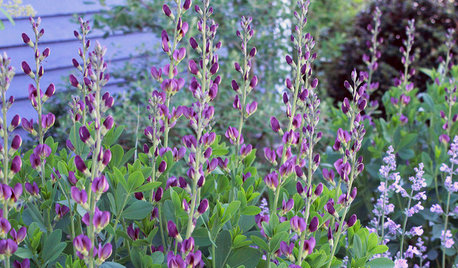




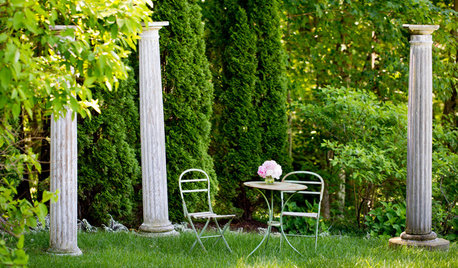







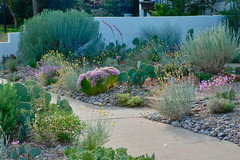
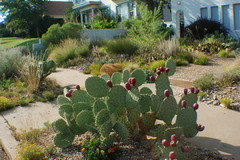

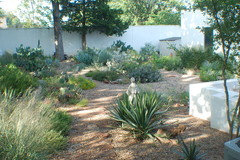

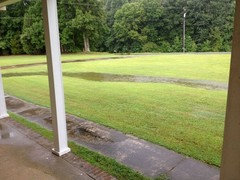
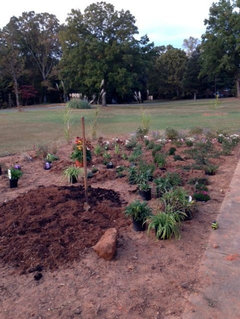
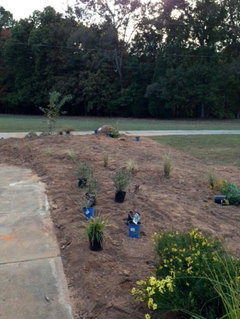

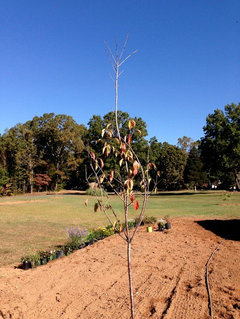
GreatPlains1